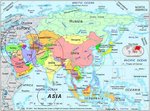plan_D said:If I want to bait up a comparison between different aircraft types, I will. Also, I never said the La-7 was a poor aircraft. The La-7 was probably the best the VVS had, that's why I compared it to the H.F XIV Spitfire!
The Spit XIV would trash a La-7 in a dogfight.
The Russian Lavochkin series are hyped up to be something they were not, the 109's 190's litterally slaughtered them.
The best Soviet Fighter was the Yak-3 in my opinion.

